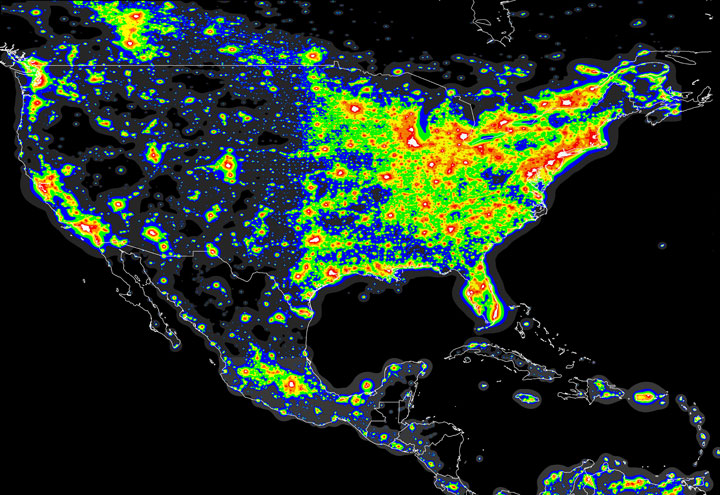When you walk out the door, how many stars can you see?

Chances are, if you’re like most people around the world, the answer is very few.
A new global atlas of light pollution was published in the journal Science Advances on Friday. The international research team concluded that the Milky Way — named by the ancient Romans for its resemblance to flowing milk — is only visible to one-third of humanity.
READ MORE: Saving the night: Light pollution a serious concern for human health and wildlife
“We’ve got whole generations of people in the United States who have never seen the Milky Way,” said Chris Elvidge, a scientist with NOAA’s National Centers for Environmental Information. “It’s a big part of our connection to the cosmos — and it’s been lost.”
The same, of course, can be said about Canada. Most Canadians live in urban centres, full of lights that illuminate primarily across and upwards. Or, in other cases, glare is too bright that it makes it impossible for your eyes to adjust to the dark. This is called light pollution.
The researchers said that light pollution is particularly bad in countries like South Korea, Italy and Singapore. Due to large uninhabited regions, Canada and Australia still have a substantial number of dark-sky areas.
Europe only has small areas where the night sky can be seen.
There are efforts under way across Canada to reduce light pollution, including streetlights with full cutoff lighting, where the light is directed downwards to just the area it is meant to illuminate.
There have also been dark-sky preserves, including Canada’s largest, Wood Buffalo National Park, which stretches across the Northwest Territories and Alberta.
“I hope that this atlas will finally open the eyes of people to light pollution,” said lead author Fabio Falchi from the Light Pollution Science and Technology Institute in Italy.
You can do your part to reduce light pollution by using full cutoff lighting (available at hardware stores), only turning on lights when necessary, or even using motion-sensitive outdoor lights.


Comments